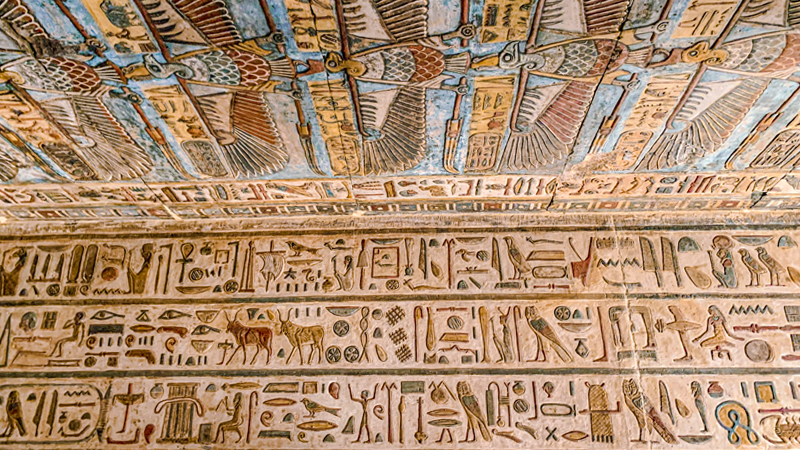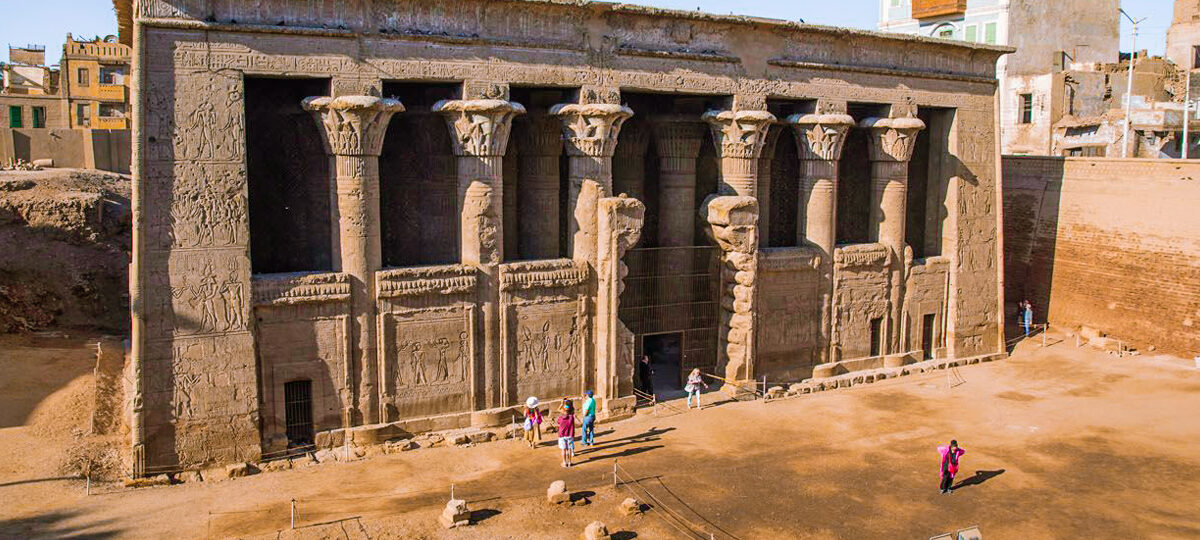Temple of Esna
Esna Egypt has some of the most famous ancient Egyptian temples. During the Roman and Ptolemaic times, Esna’s influence was evident in the temples in this area, especially the Temple of Esna,
also called the Temple of Khnum. Esna was one of the most well-known cities in Ancient Egypt.
The best way to learn about the ancient Egyptian culture that thrived along the banks of the Nile is to take the Nile Cruises. So Don’t miss booking our Best Nile River Cruises 2025
Where is the Esna Temple?
The town of Esna is on the western side of the Nile, about 485 kilometers from where Cairo is today. The Temple of Esna is in “the City of the Fish,” also called Esna. In ancient Egypt, this
city was called Senat, and when the Greeks took over, they changed its name to Latopolis. In ancient Egypt, people thought of the perch fish as a god.
When was the Temple Of Khnum Built?

King Tuthmosis III of the 18th Dynasty started building the Temple of Esna for the god of creation with a ram’s head, Khnum. However, the Temple wasn’t finished until the Ptolemaic
and Roman periods, between 40 and 250 A.D. The names of influential people who helped build the Temple of Esna also called the Temple of Khnu,m are written on the walls
of the Temple.
The Temple of Esna’s ruins includes a hall of columns with twenty-four pillars beautifully decorated with lotus flowers and palm capitals. Reliefs on the walls show Ptolemaic and Roman
emperors dressed as pharaohs and offerings to the god Khnum. Along the walls, there are four rows of these reliefs. The priests and people who took care of the Temple would store things
in the rooms on either side of the entrance to the Temple. On both sides of the front door are these rooms.
You’ll see that six priests are carrying Emperor Trajan in a litter. Each priest is wearing a mask of either a jackal or a hawk on either side of the doors to each chamber. Some
of the most exciting writing in this Temple can be found on the top, where there are pictures of the stars and planets. If you stand to the left of the Temple’s entrance, you can see the sky goddess
Nut, the Dog Star, Orion’s belt, and Alpha Draconis (or the Dragon Star).
There are reliefs of different birds and the gods Horus, the God of Victory, and Khnum, Dragging a Net Full of Fish from the Nile, on the western front wall of the Temple. Both of these gods are
pictured holding a net. It is essential because the last known hieroglyphic writings are at the bottom of this picture. In 250 A.D., Dios, emperor of Rome, finished writing these
inscriptions.
Check Our Top Nile Cruise Trips:-
- Standard Nile Cruise
- Deluxe Nile Cruises
- Luxury Nile Cruises
- Ultra Luxury Nile Cruises
- Lake Nasser Cruise Ships
- Dahabiya Nile Cruise
ِAbout Esna Temples?
As you walk into the Temple of Esna, you see that much care went into building it. Ancient Egyptians went to the Temple of Esna, which was considered a holy place. In
worship, they had to follow several rules about how clean they had to be. Inscriptions on the walls of the Temple give the impression that people had to follow strict rules to get into the
building. Some of these rules included cutting their fingernails and toenails, washing their hands with natron, wearing linen clothes, and waiting a few days between sexual encounters.
The British built barrage bridges on the Nile River in 1906, and the “Electricity Bridge” was built in the 1990s. These bridges have brought a lot of attention and business to the Egyptian town of Esna.
Esna is often a stop for people on Nile cruises that go by the city. While captains often use the lock system to figure out where to go, tourists usually go to the Temple of Esna. A couple of
blocks from the Nile Corniche is a busy open-air market that travelers may want to check out while in Esna.

